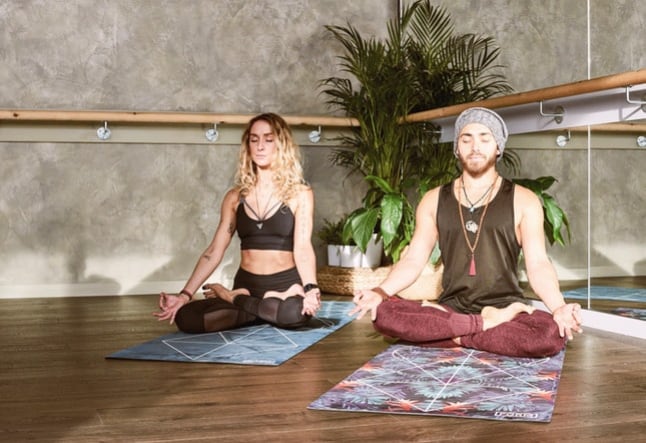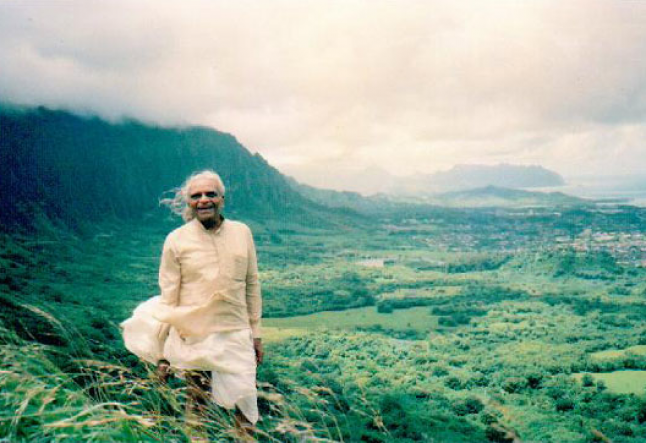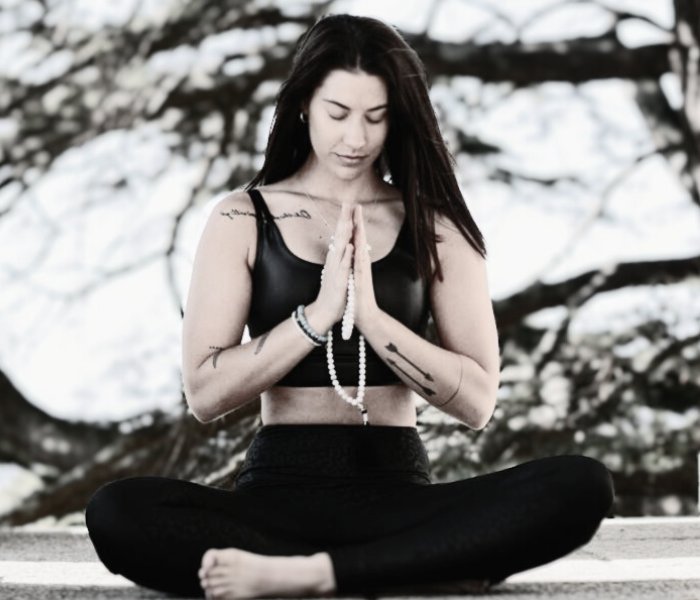benefits of a 200-hour yoga teacher training program
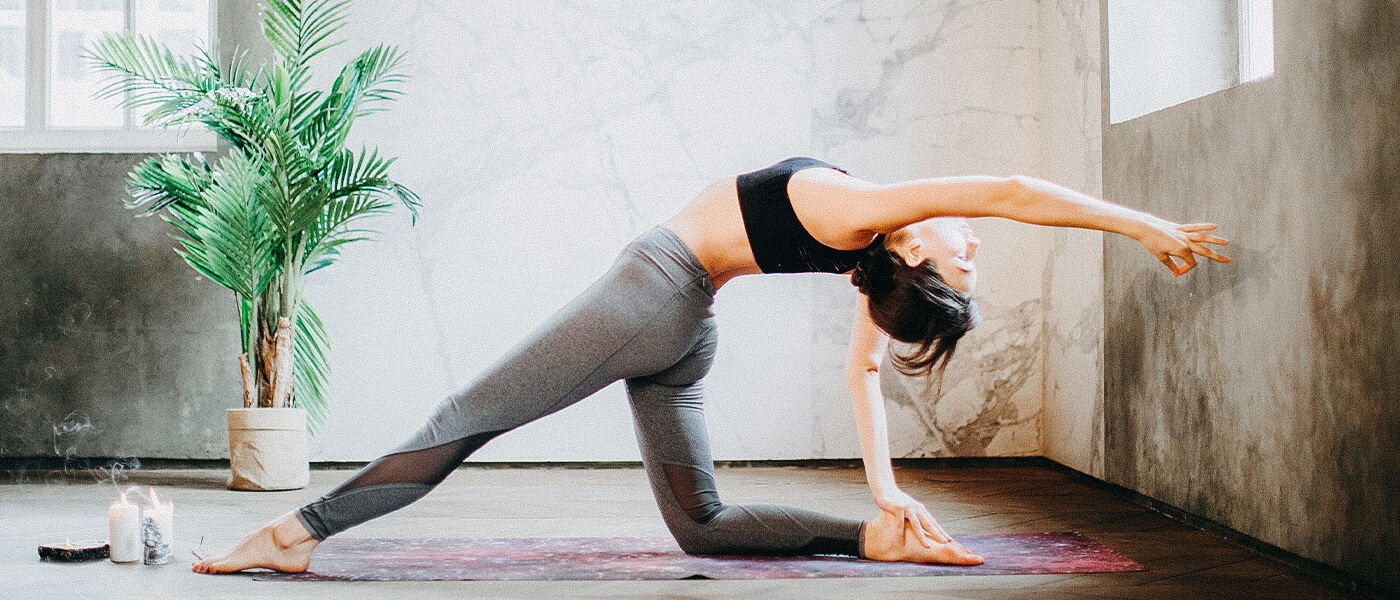
Yoga is a widely practiced and beloved form of exercise, meditation, and spirituality. It has become increasingly popular in recent years as more and more people are discovering the many benefits that yoga can provide.
As such, those interested in deepening their knowledge of yoga may consider enrolling in an accredited 200-hour Yoga Alliance Registered training program. This article will explore the various benefits of these programs as well as what they entail, making it easier for readers to decide if this type of training is right for them.
The 200-Hour Yoga Alliance Registered Training Program provides aspiring yogis with a thorough education on all aspects of traditional Hatha and Vinyasa practices. Students who complete such training receive certification from the Yoga Alliance, which serves as recognition of their expertise and achievement within the realm of yoga practice.
Also Read>>> Yoga certification online
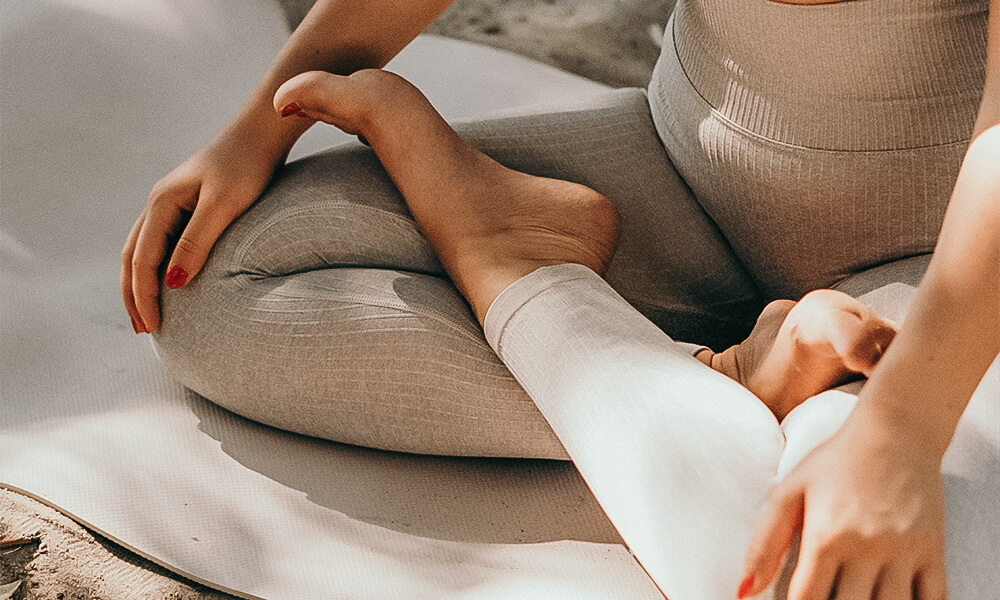
Not only does completion signify mastery over foundational poses and sequences but also showcases one’s understanding of anatomy, philosophy, history, ethics, alignment principles, and teaching methodology.
In addition to providing comprehensive instruction on everything related to yoga practice itself, this type of certification offers certain advantages when it comes to job opportunities within the field or even starting a successful business as a private instructor.
With the growing demand for knowledgeable instructors comes increased competition; having an official credential can help set practitioners apart from others vying for similar positions or clientele base.
Therefore, potential students should weigh both the requirements necessary to obtain certification along with its many rewards before committing to such an endeavor.
Table of contents
Key Takeaways
Completing a Yoga Alliance Registered 200-Hour Training can provide numerous benefits for individuals looking to deepen their yoga practice or pursue a career as a yoga teacher. This program is open to anyone with a passion for yoga, and the different types of training available allow individuals to tailor their education to their specific goals.
Completion of the program requires meeting specific criteria, evaluating the course curriculum, and understanding the role of a yoga instructor. Additionally, there are numerous opportunities for continuing education and professional development beyond the initial 200-hour certification.
With the right resources and support, individuals can successfully enhance their practice and embark on a fulfilling career as a yoga professional.
What Is A Yoga Alliance Registered 200-Hour Training?
A Yoga Alliance Registered 200-Hour Training is a comprehensive program that allows yoga practitioners to become certified instructors. This type of training is recognized by the internationally renowned Yoga Alliance, which has established standards for certifying and accrediting qualified teachers who demonstrate adequate knowledge and skill in teaching yoga safely and effectively.
The 200-hour certification requires a minimum of 175 hours of contact instruction with an approved teacher trainer or mentor, as well as 25 hours dedicated to independent study.
Contact instruction includes classroom time as well as hands-on practice in teaching techniques such as anatomy, physiology, history, philosophy, ethics, alignment principles, pranayama (breathing) practices, and other related topics relevant to teaching yoga.
The emphasis of the 200-hour training is not only on technical proficiency but also on personal development. Students are encouraged to explore their journey through self-reflection, meditation, and contemplation to gain insight into themselves and others.
Upon completion of this coursework, students will have acquired the necessary skills and expertise required to teach a safe and effective yoga class; however further specialization may be pursued depending on individual goals.
In addition to completing all course requirements, those seeking Yoga Alliance accreditation must pass the organization’s written exam covering material from anatomy & physiology, methodology & technique classes taught during the 200-hour training program.
Once accredited by Yoga Alliance students can use the credential RYT200 (Registered Yoga Teacher at the 200-hour level). For ongoing professional development individuals holding this credential may pursue advanced studies such as 500 Hour training or specialty workshops offered by various organizations worldwide.
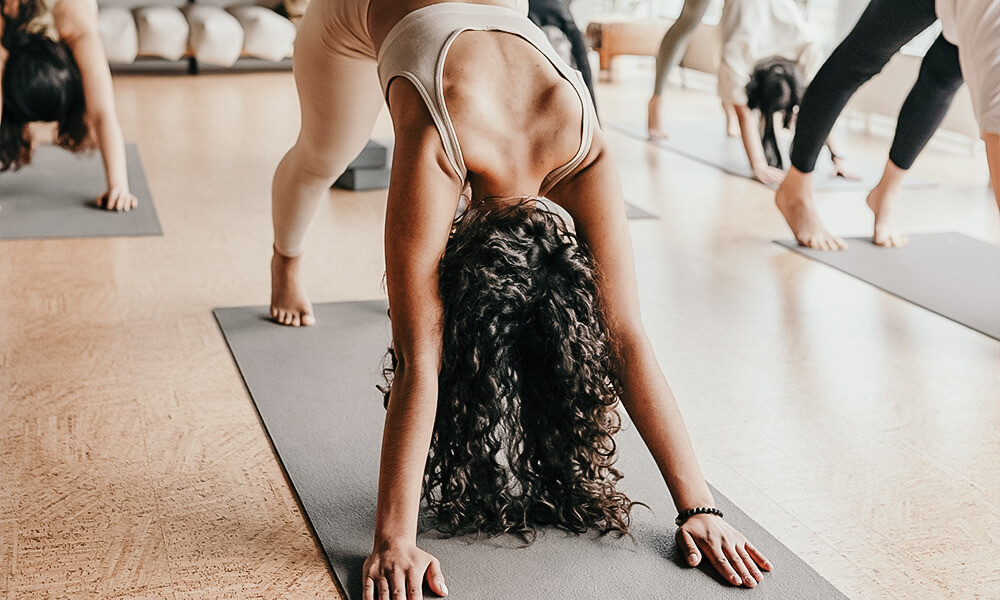
Who Can Benefit From This Program?
As the sun rises, illuminating a new day, so too does this program shine a light on all those who need it. A Yoga Alliance Registered 200-Hour Training is designed to benefit yoga practitioners of any level and beginners alike.
For those just beginning their journey into the world of yoga, this training offers an in-depth look at what they can expect from their practice as well as knowledge about anatomy, philosophy, and proper alignment within postures.
Experienced yogis will find that these classes provide a valuable opportunity to refine techniques and deepen their understanding of the many facets of yoga.
The intensive nature of this program allows for much learning in a short amount of time. It creates an immersive environment where students are surrounded by experienced teachers who focus on deepening each student’s practice. This type of focused instruction encourages growth through hands-on experience rather than theoretical study alone.
Additionally, students receive guidance when creating sequences tailored specifically to their needs and interests which gives them the confidence to teach others with clarity and purpose after completion of the coursework.
An essential part of being able to effectively guide others is having an ethical framework upon which one stands while teaching; this program provides such foundational principles along with the tools necessary to create safe spaces for fellow practitioners.
In addition, there is often an increased awareness among participants regarding how they interact with themselves and others during class due to the emphasis placed on exploring personal values while maintaining respect for other beliefs and backgrounds.
Through its combination of physical practice and intellectual expansion, this style of training cultivates strong leadership skills that allow graduates not only to succeed in their yoga practices but also confidently share their newfound wisdom with others.
As such, those seeking out further education or even a career path in yoga would be wise to consider enrolling in this certification program – it could offer invaluable insight into both oneself and the wider realm of possibility beyond traditional studio classes.
Advantages Of Becoming Certified
Certified yoga teachers have access to a range of benefits that are not accessible to those who have not taken the steps toward becoming certified. Those with a 200-hour training certification will be better equipped to teach safe, knowledgeable, and effective classes that meet the needs of their students.
This certification also provides members with opportunities for professional development such as workshops, continued education courses, and conferences that can help advance their teaching career.
The credentials associated with completing a 200-hour program provide an enhanced level of credibility amongst other instructors and potential employers.
With this recognition comes more job prospects and higher salary offers due to the expertise acquired through the program. Being certified may lead to additional employment opportunities in fitness centers or medical clinics where yoga is often prescribed as part of rehabilitation programs.
Additionally, some health insurance companies offer reimbursement for services provided by certified professionals which allow practitioners to monetize their skillset even further.
Having this certification may also provide graduates with access to exclusive membership clubs or discounted rates on supplies, events, retreats, and travel accommodations related to the field of yoga instruction.
These financial savings can certainly add up over time allowing them greater freedom when it comes to budgeting expenses related to teaching or personal practice.
In addition, having completed a 200-hour course demonstrates commitment and dedication towards one’s craft; thus inspiring confidence within both current and prospective students alike while helping establish trust between teacher and student relationship for each member to achieve optimal learning outcomes from their experience together in class.
Understanding The Types Of Training Available
Gaining a thorough understanding of the available types of training is essential for those considering enrolling in a yoga certification program. With the sheer plethora of options, it can be difficult to discern which type might best suit an individual’s needs and interests.
Fortunately, this article will provide readers with an overview of the main types of training programs that are at their disposal. Truly, there has never been a better time than now to explore one’s passion for yoga through professional development courses.
The first type of training program is usually referred to as 200-hour Registered Yoga Teacher (RYT) Training Program. These programs have become increasingly popular over the past few years due to their comprehensive curriculum and recognition by the Yoga Alliance, making RYT certifications highly sought after amongst aspiring yogis worldwide.
Generally, these programs encompass topics such as anatomy, sequencing, meditation techniques, ethics, and more; all providing students with an invaluable opportunity to gain knowledge from experienced teachers.
Another type of training available is 300 or 500-hour Advanced RYT Programmes which offer students even greater depth into specialized areas like therapeutic yoga teaching skills or advanced postures practice.
Students enrolled in these specialized programs often receive mentorship opportunities from senior instructors while gaining further insight into how they can eventually teach professionally.
As well as offering enhanced learning experiences in comparison to basic level RYT programs, completing one’s education with an Advanced RYT certification puts them on par with some of the most respected professionals within the industry whilst also granting access to higher paying roles as a result.
Finally, short non-registered workshops may also be beneficial for those looking to expand their repertoire without having to commit too much time and energy towards long-term studies – however, bear in mind that any certifications obtained through these routes are not recognized by the Yoga Alliance so it should only ever be considered as continuing education rather than something accredited enough to take out insurance policies against potential legal issues during class instruction, etc.
Such workshops typically cover specific topics such as chanting mantras or refining alignment cues but rarely feature a syllabus complete enough for instructor accreditation purposes unless combined with longer periods spent studying either online or offline intensively under qualified tutors/mentors etc., which brings us back full circle around again!
No matter what kind of route someone chooses when deciding upon obtaining additional qualifications related to practicing and teaching yoga – whether it’s registering for formal classes offered by dedicated providers or simply taking up periodic seminars instead – doing their research beforehand is always advised before committing fully since different countries may have varying standards set regarding what constitutes acceptable forms of certification before being able to work legally within certain contexts e.g., health clubs, etc.
Ultimately though, no matter what course one decides upon investing in overall it will serve them greatly if they remain focused throughout on achieving personal growth alongside superior professionality – both key aspects which contribute heavily towards maximizing success when working within this field!

Learning Outcomes Of The Program
A 200-hour yoga training program is designed to provide the most comprehensive education in all aspects of yoga. The learning outcomes of the program are focused on developing a deeper understanding and integration of yoga philosophy, anatomy, alignment principles, sequencing, teaching methodology, practice techniques, and ethics.
Upon completion of the program, participants will have gained an understanding of how to safely and effectively teach classes that are appropriate for a variety of levels and settings.
The program also provides students with opportunities to develop their unique style as teachers by exploring various levels and styles of teaching from Hatha Yoga to Ashtanga Vinyasa flow or Yin Yoga.
Through the coursework curriculum, students learn about key concepts such as Ayurveda and Sanskrit terminology which can be applied to their practice or used when communicating with clients or other yoga practitioners.
Additionally, they will become familiar with common postural alignments as well as modifications for each pose depending on individual needs.
The program’s focus is not only on providing a strong foundation for teaching but also on fostering personal growth through self-reflection activities and group discussion sessions which help cultivate meaningful connections between fellow students.
Alongside this exploration into yogic philosophy and practices, there are opportunities to explore meditation techniques, pranayama (breath control), chanting mantras, and relaxation methods that promote mental clarity while instilling inner peace within one’s self.
Upon successful completion of the program requirements including written assignments, final exams, and attendance requirements; graduates receive certification as Registered Yoga Teachers (RYT) according to standards set forth by Yoga Alliance USA – paving the way towards furthering their professional development in the field of yoga instruction.
Prerequisites To Participate In A 200-Hour Training
Before embarking on any journey, the traveler must ensure they have all their prerequisites in order. In the same vein, those considering a 200-hour yoga training program registered with Yoga Alliance should familiarize themselves with all requirements and qualifications beforehand. Historically, it has been understood that there are certain elements of preparation needed for such an endeavor.
First and foremost is knowledge. It stands to reason that basic knowledge about anatomy and physiology as well as yogic philosophy would be beneficial to students enrolled in a 200-hour course.
Moreover, some prior experience with physical postures (asanas) is typically recommended before enrolling in such a program; although not always required depending on which school one chooses to train at.
A minimum of six months of practice before beginning the course is generally suggested by instructors or schools offering this form of certification.
Additionally, attending a few workshops ahead of time may also prove advantageous when entering into a two-hundred-hour program; especially if these are related to specific styles being studied during the training itself.
For instance, if studying Ashtanga Vinyasa Yoga then taking preparatory classes focused on that style can help immensely in better understanding what will be taught throughout the coursework.
Moreover, having personal experiences participating in various types of group classes could aid greatly in properly engaging during lecture material associated with teaching methodology or sequencing practices within each class presented via lectures and demonstrations from faculty members leading the teachings within the said curriculum framework.
Ultimately, individuals intending to take part in a 200-hour training through Yoga Alliance need to assess whether they possess the requisite capabilities for completing such a rigorous undertaking; mentally, physically, and spiritually — sans any undue pressure placed upon them by external factors outside their purview of control or influence.
With proper guidance plus dedication towards self-study rituals both inside & outside classroom settings alike, aspiring participants can gain tremendous insight regarding many facets involved with becoming adept practitioners while pursuing certified instruction under the auspices of renowned organizations like Yoga Alliance International or local governing bodies determining educational standards therein applicable areas concerned herewith accordingly.
Meeting The Required Criteria For Certification
The process of attaining a 200-hour yoga alliance registered training certification begins with meeting the required criteria. The first requirement is to have logged at least 180 hours of in-class instruction, which may include up to 40 hours of home study.
An additional component is 20 hours of non-contact time with supervised teaching and instruction, as well as 10 contact hours dedicated to formalized assessments. All these elements must be completed within a total duration of three months or less.
In addition, the curriculum for this type of certification requires that students attain proficiency in postures and breathing techniques, pose modifications based on student needs, safety guidelines for practice and teaching, anatomy and physiology related to yoga poses, philosophy and ethics principles associated with yoga practice, sequencing classes, learning how to teach special population groups such as pregnant women or seniors; developing teaching skills; exploring business aspects related to setting up a studio or offering private sessions; also understanding equipment requirements depending on specific settings where one might offer classes.
Finally, once all the requirements have been met satisfactorily by the student according to their particular organization’s standards (which can vary), they will receive their RYT200 certificate from Yoga Alliance International – an accreditation that recognizes teachers around the world who meet established educational standards and hold dedication towards ongoing professional development in their field.
This comprehensive certification program offers participants an opportunity to learn about various components included in becoming a competent yoga teacher while providing them with the essential knowledge needed for personal growth along their journey towards self-mastery.
Evaluating The Course Curriculum
Having met the required criteria for certification, it is important to evaluate a yoga alliance registered 200-hour training course’s curriculum.
A well-structured and comprehensive curriculum should include knowledge of asana/poses, anatomy and physiology, pranayama/breath control, meditation, philosophy, teaching methodology, and lifestyle integration. It should also cover ethics and business practices in the yoga industry.
Understanding these various components can help an individual decide if this kind, of course, is right for them.
Also read >>> What is an average yoga instructor salary
The structure of the course often dictates how each subject will be taught. While some courses may focus on lecture-style classes; others may use discussion-based learning or interactive activities like group projects.
Knowing how the content will be presented can give potential students insight into what type of educational experience they can expect from the program. In addition, researching who teaches each section provides further clarity on the quality of instruction that will be given throughout the course.
When reviewing a curriculum’s syllabus it is important to understand which topics are covered within each module but also how those topics are placed within a larger context such as yogic history or current trends in practice styles.
This helps people get a better sense of what knowledge they will gain by taking part in this level of training. For example, many programs provide modules on trauma-informed yoga techniques or offer specialty training on special populations such as children or seniors.
By looking at these types of offerings one can assess if their interests align with those being offered through that particular program.
To make an educated decision about whether to pursue a 200-hour training program it is necessary to thoroughly explore not only its requirements but also its curriculum structure and offerings so that one can determine if it meets their needs and expectations for growth as a practitioner and teacher alike.
How Long Does It Take To Complete A 200-Hour Training?
The 200-hour training is a comprehensive program that requires dedication and commitment. The completion time of the 200-hour yoga teacher training can vary depending on the individual’s learning abilities, goals, and schedule.
However, most programs generally require an average of 4 weeks to complete. This includes contact hours with instructors as well as self-study or independent study assignments.
Before enrolling in any 200-hour training program, an important factor to consider is how long it will take you to finish all of the required courses and assessments. To ensure you have enough time for each component of your coursework, some students opt for longer training such as 6 or 8 weeks instead of just four.
During this extended period of study, participants can immerse themselves more deeply in the material and gain valuable experience through practical application.
In addition to the total number of weeks spent on completing a 200-hour training program, other variables may affect timeline estimates. For instance, if a student must travel often due to work commitments or family circumstances then they might need additional time outside of class hours to stay up to date with their studies.
Additionally, certain components like anatomy lectures or advanced postures can also cause delays if the extra practice is needed before moving on to the next lesson plan item.
Potential students must investigate what type of expectations exist within different programs before enrollment so that realistic timelines can be established from the outset.
Proper planning will guarantee success during a 200-hour training journey by helping individuals manage their workload effectively while adhering to personal commitments throughout their course duration.
Also Read>>> Yoga certification programs
Cost Considerations
The time and effort required to complete a 200-hour yoga alliance registered training are considerable. Equally important are the associated costs, which must be taken into account when deciding whether or not such a program is right for you.
Understanding these cost considerations can help inform your decision as to whether this type of training will fit within your budget.
Tuition fees are one obvious expense that must be factored in when considering a 200-hour yoga teacher training course. Depending on the provider, tuition may vary widely; some schools have lower tuition than others due to their size, location, and other factors. It’s imperative to research courses carefully before enrolling so you understand what kind of financial commitment you’ll need to make.
The good news is that many providers offer payment plans and scholarships that can help offset some of the upfront costs associated with attending an accredited training program.
Another potential cost consideration is travel expenses if the school isn’t nearby. Many providers hold training at beautiful retreat centers around the world, which can add up quickly if transportation needs are not accounted for ahead of time.
Additionally, accommodations should also be taken into account — especially if the training includes overnight stays away from home. Be sure to inquire about any additional fees related to lodging during registration so there aren’t any surprises down the road.
Also read >>> 200 hour yoga teacher training online
In addition to tuition and travel costs, students should consider other living expenses such as food and supplies throughout the course. Depending on how long it lasts, materials like textbooks might also need to be purchased separately from tuition fees – though often these items come bundled with registration agreements as well.
Before committing to a particular course, do your homework and ensure all necessary resources are included to keep track of finances while participating in your chosen training program.
Understanding The Role Of An Instructor
The role of a yoga instructor is an incredibly important one in providing comprehensive training to students. It requires not only the knowledge and expertise needed to lead a safe and effective practice but also the ability to foster a learning environment for exploration and growth.
Becoming a qualified 200-hour teacher demands that individuals understand their role within this context.
Instructors play several roles throughout classes or workshops. They develop class plans which include both physical postures (asanas) as well as more subtle aspects such as meditation, pranayama, and philosophy based on the needs of the students present.
Instructors must be able to accurately assess each student’s level of understanding regarding these topics while allowing them space to explore all facets of yoga at their own pace. Furthermore, they should create an atmosphere that encourages openness, trust, respect, and safety among participants during group events or classes.
In addition to guiding individuals through their practice, instructors serve as mentors who can provide guidance and advice beyond just teaching techniques. This includes sharing information about additional resources related to health & wellness or offering insight into personal development issues that may arise along the way.
Achieving this successfully requires teachers to have strong interpersonal skills including active listening and clear communication with both individual students and groups alike.
It is essential for aspiring yoga instructors seeking 200-hour certification to recognize these various roles before committing themselves fully to completing their training program.
Not only will it help them better prepare for what lies ahead but also enable them to gain greater clarity around their motivation for wanting to pursue teaching professionally in the first place.
Ways To Enhance Your Practice After Completing A 200-Hour Training
Having acquired a deeper understanding of the role of an instructor during their 200-hour training, practitioners should consider ways to enhance their practice and deepen their learning.
One way is through continued study with experienced teachers to gain further insight into yoga philosophy, anatomy, and other topics discussed during the program. Additionally, exploring different styles and approaches to teaching can be beneficial for refining skills as well as providing new ideas on how to teach more effectively.
Practitioners may also benefit from engaging in an independent study by attending workshops or classes outside of their certification process. This will help them stay up-to-date with existing trends in the industry while broadening their knowledge base.
Practitioners should also take advantage of any online resources available such as podcasts or webinars which provide valuable information that cannot be obtained in traditional classroom settings.
Finally, practitioners are encouraged to continue cultivating personal relationships with fellow yogis within and outside of the studio environment. Through networking opportunities, they can learn from each other’s experiences and build meaningful connections that could lead to greater professional success down the line.
Ultimately, taking active steps after completing a 200-hour training will enable practitioners to maintain momentum toward becoming better instructors who can make a lasting impact on others’ lives.
Common Questions About 200-Hour Training
The 200-hour training is a Yoga Alliance registered program that provides the student with an in-depth knowledge of yoga and its various elements.
The requirements for this type of certification include completing all coursework, attending classes regularly, participating in practice sessions and teaching practicums, and studying anatomy and physiology, as well as meditation and philosophy.
With such rigorous standards, it can be difficult to determine whether or not the 200-hour training is right for you. Here are some common questions about the process:
How much does a 200-hour training cost? This depends on where you enroll; costs vary depending on location and instructor fees. Additionally, students may need to purchase textbooks or other materials to complete their studies.
It’s important to research each school thoroughly before deciding which one best fits your budget and needs.
What types of certifications will I receive upon completion? Upon successful completion of the 200-hour program, graduates will receive both a certificate of completion from the school they attended as well as a certified registration through Yoga Alliance.
Both certificates signify that you have completed an accredited program of study by international standards established by Yoga Alliance.
Are there any prerequisites required before enrolling in a 200-hour training? While there are no strict prerequisites necessary before beginning a 200-hour training program, many schools require prospective students to demonstrate proficiency in basic postures and breathing techniques as part of their admissions process.
Aspiring instructors should also possess strong communication skills so they can effectively teach individuals from varying backgrounds during practical workshops included in the curriculum.
To make sure that a 200-Hour Training is right for you, it is important to consider both the benefits and requirements associated with this certification program.
When making your decision, do thorough research on what different programs offer so that you can choose one that best meets your needs.
Continuing Education And Professional Development Opportunities Beyond 200 Hours
Once yoga practitioner has completed their 200-hour training, they may be interested in continuing education and professional development opportunities.
These courses are typically offered as part of an advanced 500-hour certification program or can be taken individually to gain additional expertise in specific areas of practice such as teaching methodology, anatomy and physiology, therapeutics, meditation, philosophy, and more.
Also Read>>> Yoga teacher training
Continuing education is beneficial for yoga practitioners who wish to gain further knowledge about the ancient discipline and deepen their understanding of its principles.
It also allows them to become certified in specialized areas that enable them to offer unique services to students. Additionally, it helps teachers stay up-to-date on the latest research and trends within the field so that they can provide high-quality classes with a modern approach.
Professional development is equally important for those who wish to remain competitive in this growing field. By taking workshops or attending conferences related to yoga instruction, professionals can expand their network while learning new skills from experienced teachers.
They can also attend lectures focused on topics such as marketing practices, business management, and social media strategies – all important components required for success in today’s world.
Yoga practitioners should consider these educational resources when looking for ways to advance their career path or simply increase personal growth within the industry.
With access to various forms of continued study available both online and offline, there are plenty of options available regardless of budget or geographical location. Making use of these resources will help ensure long-term success as a teacher by providing ongoing inspiration and support throughout one’s journey into yoga instruction.
Resources And Support For Yoga Professionals
For many yoga professionals, the journey of becoming a certified instructor can be an overwhelming and daunting experience. Gathering up all the resources necessary to complete such rigorous training is no small feat.
However, it doesn’t have to be done alone; there are support resources available for those looking to make their 200-hour certification dreams come true. With seemingly boundless amounts of information at our fingertips, having access to reliable data has become easier than ever before – making navigating any new task that much simpler.
Yoga Alliance® provides a comprehensive list of essential reading materials for trainees and teachers alike, as well as other helpful resources such as community forums, workshops, and online classes.
Aspiring instructors can take advantage of this vast array of offerings from experts in the field – providing them with unparalleled insight into what it takes to succeed in the industry. Moreover, these invaluable sources offer additional guidance on topics ranging from anatomy & physiology to ethics & philosophy.
Also Read>>> RYT Meaning
Moreover, some training programs provide direct mentorship opportunities for students who wish to learn directly from experienced professionals.
These mentorships often consist of one-on-one sessions or group meetings which cover everything from safety protocols to mindful communication skills – giving participants hands-on experience within their chosen practice to refine their teaching style and knowledge base further. Furthermore, they also receive feedback on how they can improve their approach both inside and outside the classroom setting.
The ability to connect with like-minded individuals is another key benefit that comes along with taking part in a professional program or coursework related to yoga instruction.
From building relationships with fellow yogis to engaging with knowledgeable authorities on various aspects of teaching practices – being able to network among peers makes it possible for practitioners not only to gain valuable advice but also share ideas about best practices within the industry itself.
This type of collaboration often leads to meaningful growth both personally and professionally, creating an abundance of opportunities for those seeking out supportive communities within which they can thrive.
It’s safe to say that regardless if someone decides that a 200-hour yoga alliance registered training is right for them or not – accessing quality education and developing strong relationships between colleagues should always remain a top priority when embarking upon a career path involving wellness education and service provision.
By doing so, aspiring trainers will find themselves better equipped with all the tools needed for success in this rapidly growing arena of the profession!
Conclusion
Yoga is a time-tested practice that has proven to offer many benefits for practitioners of all levels. A Yoga Alliance Registered 200-Hour Training offers a comprehensive and meaningful experience for those looking to deepen their practice and embark on the journey as a yoga teacher.
Those who have completed this program can gain invaluable knowledge, build lasting friendships, and increase self-awareness. With an understanding of the types of training available, learning outcomes, ways to enhance one’s practice, continuing education opportunities beyond 200 hours, and resources offered by organizations such as Yoga Alliance, it is easy to see why so many people choose to pursue this credential.
When considering whether or not a 200-hour training program is right for you, think about how it will fit into your lifestyle, what type of certification appeals most to you personally and professionally, and if the curriculum meets your needs.
The decision should be based on careful consideration of your goals both in terms of personal growth and professional development. By engaging with these questions honestly and thoughtfully before committing to any particular program, you can find yourself empowered with greater clarity regarding the direction of your future path in yoga studies.
Ultimately gaining certification through a Yoga Alliance registered 200-hour training can open up new possibilities within oneself while offering assurance when seeking out career opportunities in teaching yoga classes or pursuing further education along the yogic pathway.
So take some time today to explore all that awaits you on this rewarding journey!
